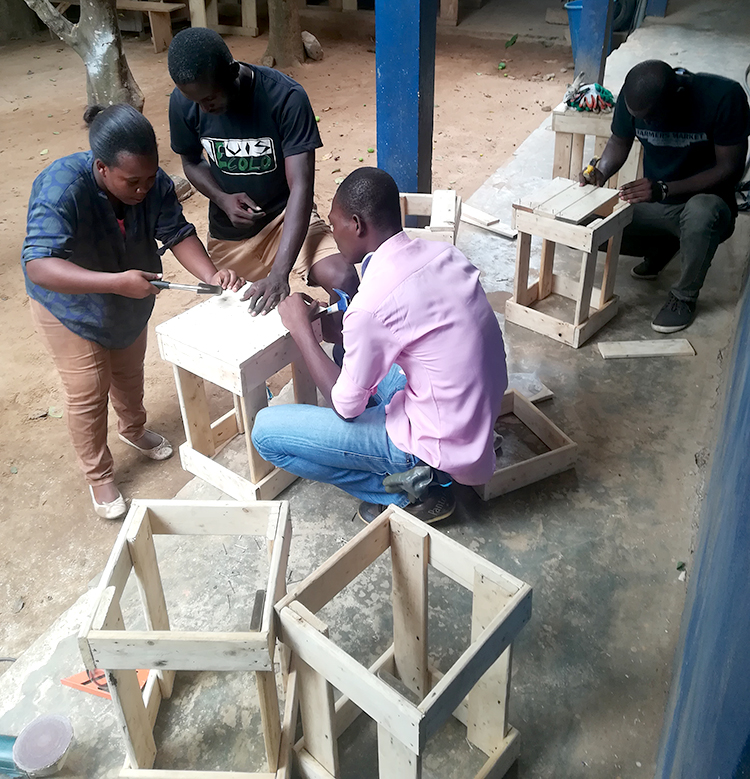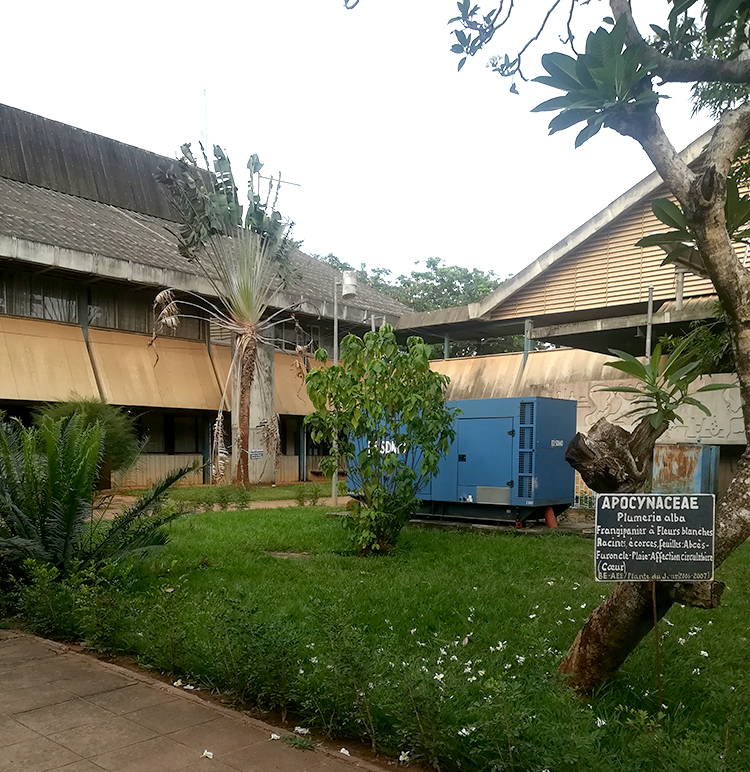Column of a material maker (27)
Published 6 March 2018 by Caroline Grellier
Off to Benin. Following her return to university, our maker is moving from principles to practice with a project on upcycling residues from the cotton sector.
Cotonou, correspondence
After four months at Nîmes university (south of France) being trained in social innovation methodologies through design and experimenting participative approaches, it is time to refocus on my bio-sourced materials agency project, Termatière. In January, I alternated meetings with actors in research on bio-materials and a small search for clients that took me on a complete tour of France.
Several detours via Montpellier also, in the Inra and SupAgro laboratories where I got my lab coat out again, taking time to make a new set of vine shoot composites, on request from interested clients who wanted to feel these samples.

Studious January
Between two trains, I attended inspiring conferences: the anthropologist Yann-Philippe Tastevin, invited to the Pompidou Center Design marabout in Paris on “post-design or the art of bifurcation,” mentioned wild tech, or how an unexpected use redefines a technology; at the Ensci (National School for Industrial creation) Design in seminar, the new interactions between sciences and design were analyzed; on the occasion of Cultivate Conviviality at Ensad (National School for Decorative arts), still in Paris, the philosopher Seloua Luste Boulbina made a fascinating intervention on the link between DIYer and engineer. Enough to get my maker brain restless.
While I was at it, I read, read, read, because this year I am also a student with a design research thesis to prepare. A little philosophy of technique, a little history and anthropology of African science, a little technical documentation on by-products of the cotton sector, a few books on economics, a little literature on design research, and a few bibles such as Jugaad innovation or Design for a real world, that found an important place on my shelf.
Back to Africa

I have been back in Africa for a few days! Happy to have traded the down jacket and gloves for a sleeveless top and flip-flops, I met up as soon as I arrived with the Togolese makers of Ecoteclab for the monthly workshop every last Saturday of the month (I told you about it here and there). On the program for the morning, production of the fablab furniture from pallets. After several minutes of explanations on the models to make, I took my hammer in hand, helped by a few competent DIYers. We nailed all morning. As a result: five stools to be added to the previous five. Rendezvous in ten days for the finishing.
The lab has changed considerably (I had paid them a visit a few weeks after the opening of the makerspace), has been rearranged (painting, storage shelves, board), with more equipment too. Slowly but surely, the community has expanded and is increasingly solicited by local structures for prototyping missions.

I then reached Cotonou, the capital of Benin, in a taxi from Lomé admiring the coastline of the Gulf of Guinea: splendid. A peaceful trip, without hazards or delays, rare enough to be pointed out!
I was in fact expected on February 26 at the Abomey Calavi university, in the premises of the Engineering School where I am starting a 5-month internship, supervised by the teacher-researcher Akanho Chakirou Toukourou. My mission will be to support his research laboratory in local materials, Potemat, on an upcycling project of by-products in the cotton sector in Benin.

Interacting with the mechanical engineering, civil engineering and chemistry laboratories, I will carry out field work that that the researchers do not have time to do. The objective is to implement a social innovation through design approach, by applying the “material maker” methodology of Termatière.
My work will be divided up in two stages: first, collecting data via interviews with cotton farmers, architects, actors of construction, populations to survey their needs, constraints and aspirations; then the identification of a pilot site through a cartography of the territory and the sector; and secondly, I will work to involve the beneficiaries and stakeholders of the project in the experimental research phases via the organization of an building site-workshop for the creation of a material library. My objective is to facilitate a better coordination between the field and lab research, to result in effective applied research.
Simultaneously, my second mission will consist in identifying the equipment needs of the lab and proposing solutions on a DIY and low-tech mode thanks to open source documentation. The democratization of the means of doing via the maker movement is leading to a mutation of scientific research. A great opportunity for African research to put forth its numerous attractive features and its unfailing resourcefulness.
